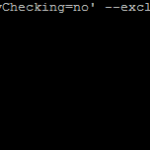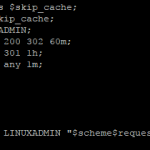
Introduction
NGINX, a popular open-source web server, has become a cornerstone of modern web infrastructure. Its versatility, speed, and efficiency make it a preferred choice for serving web content, load balancing, reverse proxying, and much more. However, to fully harness the power of NGINX, it’s crucial to fine-tune its configuration and performance settings. This 2000-word article explores the art of NGINX tuning, covering various aspects such as configuration optimization, performance enhancements, and best practices to ensure your web server operates at its best.
Understanding NGINX
Before delving into the intricacies of NGINX tuning, let’s start by understanding the fundamental aspects of this powerful web server.
What Is NGINX?
NGINX (pronounced “engine-x”) is a high-performance, open-source HTTP server, reverse proxy server, and load balancer. It was initially developed by Igor Sysoev in 2004 to address the C10K problem, which refers to handling 10,000 simultaneous client connections efficiently. Over time, NGINX has evolved into a versatile and feature-rich software solution.
NGINX Features
NGINX boasts several key features that make it an excellent choice for web serving and related tasks:
- High Performance: NGINX is known for its exceptional performance and low resource utilization. It’s designed to efficiently handle a large number of client connections and concurrent requests.
- Reverse Proxy: NGINX can act as a reverse proxy, forwarding client requests to backend servers, making it an integral part of many web application architectures.
- Load Balancing: NGINX provides load balancing capabilities, distributing incoming traffic evenly among multiple backend servers to enhance availability and scalability.
- SSL/TLS Termination: It can handle SSL/TLS termination, offloading the encryption/decryption process from backend servers, improving overall performance.
- Caching: NGINX includes caching mechanisms that help reduce server load and accelerate content delivery.
- WebSockets Support: NGINX can handle WebSockets, making it suitable for real-time applications and chat services.
Now, let’s dive into the art of tuning NGINX to make the most of these features.
NGINX Configuration Optimization
The journey to optimizing NGINX begins with its configuration file. The NGINX configuration file is typically located at /etc/nginx/nginx.conf or /etc/nginx/conf/nginx.conf on Linux systems. It’s essential to fine-tune this file to match your server’s specific requirements. Here are some key areas to focus on:
1. Worker Processes and Connections
NGINX employs a multi-process, event-driven architecture to efficiently handle client connections and requests. The two main directives related to this are worker_processes and worker_connections.
worker_processes: Specifies the number of worker processes NGINX should use. Generally, this value should match the number of CPU cores available. For example, on a quad-core CPU, you might set it to 4.worker_connections: Determines the maximum number of simultaneous client connections each worker process can handle. The optimal value depends on the server’s available memory and the expected number of concurrent connections. You can calculate it as (total memory – OS overhead) / (average memory per connection). Start with a conservative estimate and monitor server performance.
Example Configuration:
worker_processes 4;
worker_connections 1024;
2. Keepalive Connections
Keepalive connections allow multiple HTTP requests to be sent over a single TCP connection, reducing the overhead of establishing and tearing down connections for each request. It’s crucial to strike a balance between keeping connections open for too long (which may consume resources) and closing them too quickly (which may increase latency).
keepalive_timeout: Specifies the maximum time a keepalive connection should remain open. A typical value is between 30 and 60 seconds.keepalive_requests: Defines the maximum number of requests that can be served over a single keepalive connection. Setting it to a non-zero value can help prevent resource leaks.
Example Configuration:
keepalive_timeout 60s;
keepalive_requests 100;
3. Buffer Sizes
Optimizing buffer sizes is crucial for efficient data transmission. NGINX provides several directives to control buffer sizes, such as client_body_buffer_size, client_header_buffer_size, large_client_header_buffers, and output_buffers.
client_body_buffer_sizeandclient_header_buffer_size: Specify the size of buffers for request body and request header data, respectively. Depending on your application, you might need to adjust these values to accommodate large file uploads or complex headers.large_client_header_buffers: Sets the number and size of buffers used for parsing large client headers. Adjust this value if you encounter “client request body too large” or “Request URI too long” errors.output_buffers: Determines the number and size of buffers for response data sent to clients. Tweak these values for optimal performance based on the expected response sizes.
Example Configuration:
client_body_buffer_size 10K;
client_header_buffer_size 1k;
large_client_header_buffers 2 1k;
output_buffers 1 32k;
4. Gzip Compression
Enabling Gzip compression can significantly reduce the size of responses, leading to faster page loading times for clients. Use the gzip directives to configure compression settings.
gzip on: Enables Gzip compression.gzip_comp_level: Specifies the compression level (1-9). A lower value results in faster compression but larger files, while a higher value achieves better compression but may consume more CPU resources.gzip_types: Defines the MIME types to be compressed. Configure this based on your content types.
Example Configuration:
gzip on;
gzip_comp_level 5;
gzip_types text/plain text/css application/json application/javascript text/xml application/xml application/xml+rss text/javascript;
5. Server Blocks (Virtual Hosts)
If your NGINX server hosts multiple websites or applications, use server blocks (also known as virtual hosts) to define configuration settings for each domain or subdomain. Each server block typically includes directives like server_name, listen, and location.
Example Server Block:
server {
listen 80;
server_name example.com www.example.com;
location / {
proxy_pass http://backend_server;
}
}
Optimizing the server block configuration ensures that NGINX efficiently handles requests for each domain, including SSL/TLS settings, access controls, and logging.
NGINX Performance Enhancements
Beyond configuration optimization, NGINX offers a range of performance-enhancing features and techniques. Let’s explore some of these advanced options.
1. Reverse Proxy and Load Balancing
NGINX’s reverse proxy capabilities are valuable for offloading tasks from backend servers, such as SSL/TLS termination, compression, and caching. It also excels at load balancing, distributing incoming traffic among multiple backend servers to improve performance and fault tolerance.
To configure NGINX as a reverse proxy or load balancer, define upstream servers and use the proxy_pass directive in your server block configuration.
Example Load Balancing Configuration:
http {
upstream backend_servers {
server backend1.example.com;
server backend2.example.com;
server backend3.example.com;
}
server {
listen 80;
server_name example.com;
location / {
proxy_pass http://backend_servers;
}
}
2. Caching Strategies
Caching can dramatically reduce the load on backend servers and accelerate content delivery to clients. NGINX provides various caching mechanisms, including:
- Proxy Caching: Caches responses from backend servers. Configure caching parameters such as
proxy_cache_path,proxy_cache, andproxy_cache_validin your server block to enable proxy caching. - FastCGI Caching: If you’re using NGINX with PHP or other FastCGI-based applications, you can implement FastCGI caching to cache dynamic content.
- Static File Caching: Use NGINX to cache static files directly. This can be especially beneficial for serving assets like images, CSS, and JavaScript files.
Example Proxy Caching Configuration:
http {
proxy_cache_path /var/cache/nginx levels=1:2
keys_zone=my_cache:10m
max_size=10g
inactive=60m
use_temp_path=off;
server {
listen 80;
server_name example.com;
location / {
proxy_cache my_cache;
proxy_cache_valid 200 301 302 304 10m;
proxy_cache_valid 404 1m;
proxy_pass http://backend_server;
}
}
}
3. Connection Pooling
NGINX supports connection pooling, which allows it to reuse backend connections efficiently. By default, NGINX opens a new connection for each client request, but connection pooling can reduce overhead.
Use the keepalive directive in your http or server block configuration to enable connection pooling.
Example Connection Pooling Configuration:
http {
upstream backend_server {
server backend.example.com;
}
server {
listen 80;
server_name example.com;
location / {
proxy_pass http://backend_server;
keepalive 32;
}
}
}
4. Rate Limiting and Access Control
Rate limiting helps protect your server from abusive clients or DDoS attacks by limiting the number of requests they can make within a specified time frame. Use the limit_req and limit_conn directives to implement rate limiting and connection limiting, respectively.
Example Rate Limiting Configuration:
http {
limit_req_zone $binary_remote_addr zone=my_limit:10m rate=10r/s;
server {
listen 80;
server_name example.com;
location / {
limit_req zone=my_limit burst=20; proxy_pass http://backend_server;
}
}
}
5. HTTP/2 and HTTP/3 Support
NGINX offers support for HTTP/2 and HTTP/3, the latest versions of the HTTP protocol. These protocols bring performance improvements such as multiplexing, header compression, and quicker data transmission.
To enable HTTP/2 or HTTP/3, ensure your NGINX installation is compiled with the necessary modules and add the http2 or http3 directive to your server block configuration.
Example HTTP/2 Configuration:
nginxCopy code
server { listen 443 ssl http2; server_name example.com; ssl_certificate /etc/nginx/ssl/example.com.crt; ssl_certificate_key /etc/nginx/ssl/example.com.key; location / { proxy_pass http://backend_server; } }
6. Logging and Monitoring
Effective logging and monitoring are essential for identifying performance bottlenecks and troubleshooting issues. NGINX provides several log files, including access logs, error logs, and slow request logs.
- Customize logging formats and levels using the
log_formatanderror_logdirectives. - Implement real-time monitoring solutions such as Prometheus and Grafana to gain insights into NGINX performance metrics.
Example Logging Configuration:
http {
log_format custom_format '$remote_addr - $remote_user [$time_local] ' '"$request" $status $body_bytes_sent ' '"$http_referer" "$http_user_agent"';
access_log /var/log/nginx/access.log custom_format; error_log /var/log/nginx/error.log;
}
Best Practices for NGINX Tuning
In addition to the specific configurations and optimizations mentioned above, here are some best practices to keep in mind when tuning NGINX for performance and reliability:
1. Regularly Update NGINX
Stay up-to-date with NGINX releases to benefit from bug fixes, security patches, and performance improvements. Consider using package managers or official NGINX repositories to simplify updates.
2. Implement Security Measures
Configure NGINX to enhance security, including SSL/TLS settings, rate limiting, access controls, and Web Application Firewall (WAF) rules when applicable.
3. Monitor Resource Usage
Regularly monitor NGINX’s resource utilization, including CPU, memory, and network usage. Adjust configuration settings as needed to accommodate increased traffic.
4. Implement High Availability
For mission-critical applications, consider implementing high availability solutions such as load balancing with multiple NGINX instances or using a content delivery network (CDN).
5. Use a Content Delivery Network (CDN)
Offload static content and caching to a CDN to reduce the load on your NGINX server and improve global content delivery speeds.
6. Conduct Load Testing
Periodically perform load testing to simulate traffic spikes and identify potential bottlenecks in your NGINX configuration.
7. Regularly Backup Configurations
Maintain backups of your NGINX configuration files to quickly recover from configuration errors or unexpected changes.
Conclusion
NGINX is a powerful and flexible web server, reverse proxy, and load balancer that can be finely tuned to meet the specific performance requirements of your web applications. By optimizing NGINX’s configuration, leveraging its advanced features, and following best practices, you can ensure that your web server delivers exceptional performance, scalability, and reliability, even in the face of high traffic loads and demanding workloads. Continuously monitor and fine-tune your NGINX setup to keep it running at its peak performance, adapting to the evolving needs of your applications and users.



